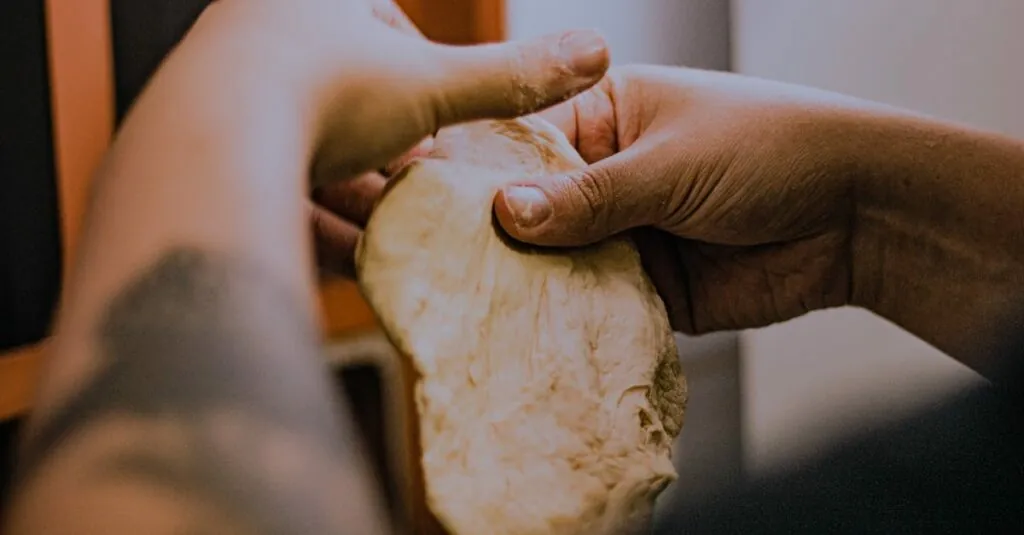Table of Contents
ToggleCooking can feel like a daunting task, especially when the only thing one knows how to make is a bowl of cereal. But fear not! The basics of cooking are easier to master than one might think. With a pinch of patience and a dash of enthusiasm, anyone can transform from a kitchen novice into a culinary whiz.
Understanding The Basics Of Cooking
Cooking involves combining ingredients through various techniques to create meals. It encompasses a range of processes including chopping, boiling, baking, and seasoning. Mastering these techniques enhances one’s ability to prepare diverse dishes with depth of flavor and presentation.
Definition Of Cooking
Cooking represents the art and science of transforming raw ingredients into delicious meals through the application of heat and technique. This transformation involves a variety of methods such as grilling, sautéing, and steaming, each contributing unique flavors and textures to food. As one learns more about cooking, understanding the role of each ingredient becomes essential, allowing for creativity and experimentation in the kitchen.
Importance Of Cooking Skills
Cooking skills carry significant value for individuals and families. Developing these skills fosters self-sufficiency and encourages healthier eating habits. It reduces reliance on processed foods, promoting nutrition and well-being. Additionally, cooking provides a platform for creativity, allowing personal expression through flavor combinations and presentation. Social connections can strengthen when sharing meals with others, making cooking a valuable life skill that enhances both health and relationships.
Essential Kitchen Tools And Equipment
Equipping a kitchen with the right tools makes cooking simpler and more enjoyable. Having essential utensils and cookware streamlines meal preparation and enhances the cooking experience.
Must-Have Kitchen Utensils
Measuring tools ensure precise ingredient usage. Essential items include measuring cups, spoons, and a kitchen scale. Mixing bowls accommodate different recipes and tasks. A whisk helps achieve airy textures in batters. A cutting board provides a safe surface for chopping. Spoons and spatulas facilitate safe mixing and flipping. Tongs allow hands-free handling of hot food. Knives, like chef’s and paring knives, are crucial for different cutting needs. These utensils form the foundation for basic cooking skills.
Recommended Cookware
Pots and pans come in various sizes and materials, each serving specific purposes. A non-stick skillet excels at frying and sautéing. A sturdy saucepan handles boiling and simmering tasks effectively. Cast iron skillets retain heat well for baking and frying. Stockpots accommodate larger dishes like soups and stews. Baking sheets play a key role in roasting and baking. A Dutch oven can transition from stovetop to oven, enhancing versatility. Investing in durable cookware improves cooking performance and durability.
Key Cooking Techniques
Understanding key cooking techniques enhances culinary skills. Mastering these methods forms a solid foundation for any aspiring cook.
Boiling And Simmering
Boiling involves cooking ingredients in water or broth at high temperatures, usually around 212°F (100°C). This technique works well for pasta, potatoes, and vegetables. Simmering operates at lower temperatures, typically between 180°F and 205°F (82°C to 96°C). This gentler approach is ideal for soups and sauces, allowing flavors to meld without risk of overcooking. Both techniques provide essential cooking options for various dishes, making them indispensable in the kitchen.
Baking And Roasting
Baking requires dry heat in an oven to cook food evenly, commonly used for bread, cakes, and casseroles. Achieving the right temperature, usually between 325°F and 375°F (163°C to 190°C), ensures proper cooking. Roasting involves cooking food at higher temperatures, often above 400°F (204°C), which enhances flavor through caramelization and browning. This technique suits meats and vegetables alike, creating delicious, savory dishes full of texture and taste.
Sautéing And Stir-Frying
Sautéing uses a small amount of fat over medium to high heat to cook ingredients quickly. This method retains the natural flavors and colors of vegetables, making them crisp and vibrant. Ingredients like onions, garlic, and bell peppers work well in this technique. Stir-frying, on the other hand, relies on high heat and constant movement to cook food rapidly. This method, common in Asian cuisines, often uses a wok for even heat distribution. Combining these techniques allows for versatile meal preparation, enabling cooks to create a range of flavorful dishes.
Essential Ingredients Every Cook Should Know
Understanding ingredients lays the groundwork for successful cooking. Mastery of basic components enhances a cook’s ability to create flavorful meals.
Common Herbs And Spices
Fresh herbs and dried spices transform dishes with vibrant flavors. Basil, a popular herb, pairs well with tomatoes and complements Italian cuisines. Oregano adds depth to sauces and marinades. Thyme works wonders in stews and roasted vegetables. On the spice front, cumin provides an earthy warmth ideal for Mexican and Middle Eastern dishes. Paprika, with its mild sweetness, enhances color and flavor in countless recipes. Garlic powder offers convenience, bringing instant flavor to various dishes. Lastly, black pepper, a fundamental spice, elevates meals with its sharp heat.
Basic Pantry Staples
Stocking a pantry with essential staples ensures preparedness for various recipes. Flour forms the base for baked goods and sauces. Rice serves as a versatile side or main dish, offering endless preparation options. Pasta, another staple, cooks quickly and pairs well with numerous sauces. Canned tomatoes provide a reliable flavor source for soups and stews. Stock and broth form the backbone of many comforting meals. Olive oil stands out for cooking and salad dressings, providing healthy fats and enhancing taste. Sugar balances flavors in both sweet and savory dishes. Finally, salt, an indispensable ingredient, brings out the natural flavors of all foods.
Embracing the basics of cooking opens up a world of possibilities in the kitchen. With the right tools techniques and a little creativity anyone can transform simple ingredients into memorable meals. Mastering these foundational skills not only fosters self-sufficiency but also promotes healthier eating habits and stronger social connections through shared experiences.
As aspiring cooks continue to build their confidence they’ll discover that cooking can be both enjoyable and rewarding. The journey of culinary exploration is just beginning and with each dish prepared they’ll gain valuable insights that enhance their skills and palate. So grab those utensils and start experimenting—delicious adventures await.







